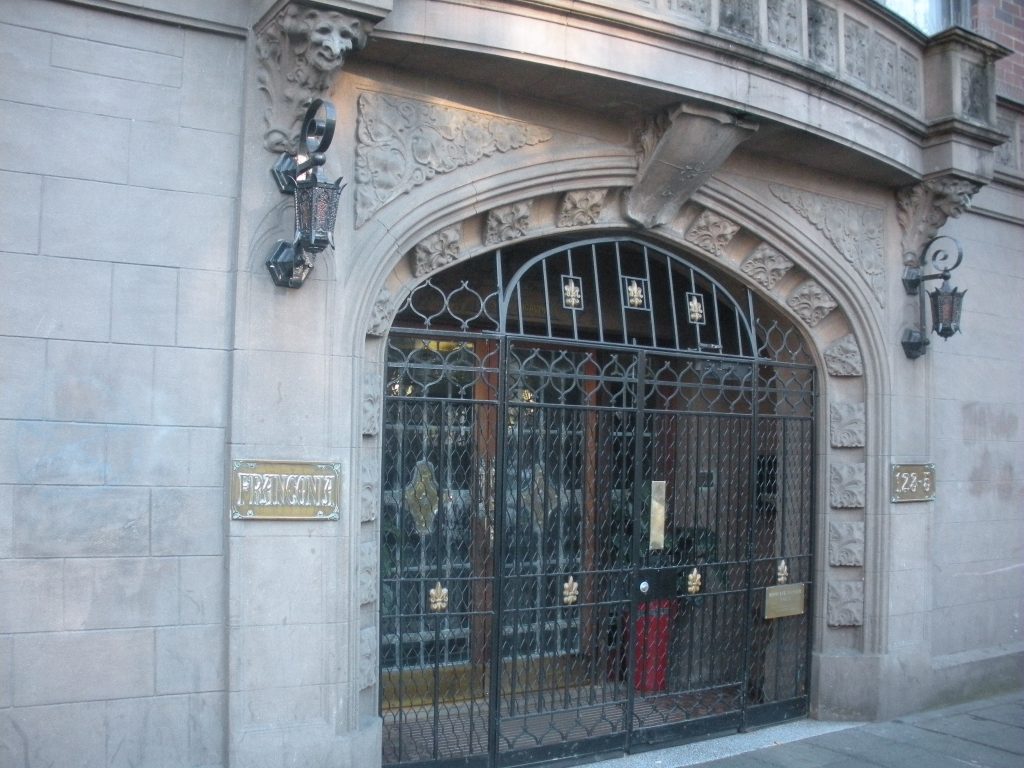FRANCONIA

Franconia sits in the heart of Potts Point opposite the heritage-listed Fitzroy Gardens and farmers’ markets.
Apartment 23 is for sale through Angelo Bouras and Joss Reid
https://www.rwebay.com.au/7681121/
Franconia shares it name with an ancient German-Frankish state dating back to 700AD.
Today, German Franconia’s unofficial capital is Nuremburg. The region was split in two in the Middle Ages (12th-14th centuries) and included some of France at a high point when gothic architecture was dominant.
Gothic is also familiar as the architecture of many of Europe’s great cathedrals and castles.
Franconia’s neo-gothic facade is unique: its stone pediment, carved gargoyles, lanterns, coats of arms, lead light and brass doors are reminiscent of neo-gothic design . The name font and various brass French fleurs-de-lis are also typical signatures of this elaborate gothic style.
It was built circa 1927 by Walter Leslie Nielsen who also designed the delightful apartments Carisbrooke and Carinthia in nearby Springfield Avenue, but in a different, neo-classical style.
The origin of its name is an enigma although, coincidentally, it was built when the RMS Franconia, a Cunard Line luxury cruise ship, arrived in Sydney on a world trip in 1927, carrying 400 passengers. This may have provided an inspiration.
The 1920s and 1930s were boom times for apartments in the 2011 area and saw blocks built in a mixture of styles such as Art Déco, neo-classical, Mediterranean and English and Gothic revival. Some, like Franconia, incorporate elements of more than one style. Apartment 23 retains original neo-classical cornices as well as Art Déco-style horizontal-banded skirting boards, metal window frames with mottled glass, herringbone parquetry, period skirting boards and terrazzo stairs. The entrance foyer with its arched convex roof is typical of gothic castle entrance halls.
Franconia’s facade is made from cast stone, revived in the 1920s in America and introduced into Australia from 1927, according to the 20th Century Heritage Society, although used since the 12th century in French fortresses.
It is a totally unique, rich building: fascinating, intriguing and enjoyable.
By
Andrew Woodhouse
Heritage Solutions





